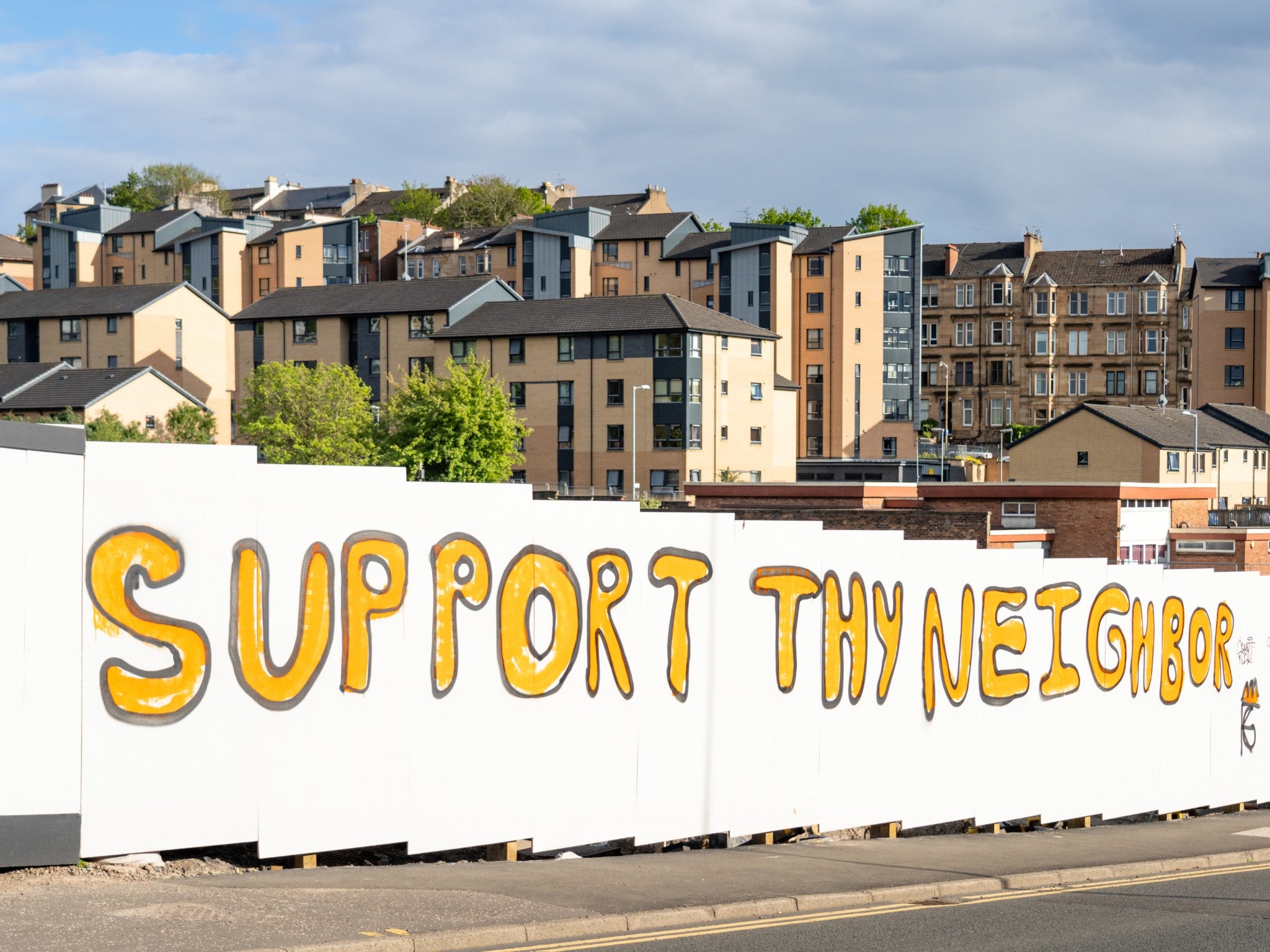The visceral reality of ‘deep poverty’ across the UK
Given that the picture presented by charities and advocates is grim why isn’t there more political clamour? Part of the problem is that academics, the government and campaign groups can’t agree on a single definition, writes Hannah Fearn


With the full economic cost of lockdown still unfurling, wages stagnating in real terms and the growing cost of living crisis yet to reach its peak, the proportion of the British population living in poverty is growing. As poverty itself grows, so is another category: “deep poverty”.
According to a recent study by the Joseph Rowntree Foundation (JRF) into extreme impoverishment, there are now 1.8m children growing up in what the charity terms “very deep poverty” – a rise of 500,000 in a decade. As the latest figures were calculated for the year 2019-2020, before the full effects of the pandemic on household incomes could be measured, it is believed that the deepest levels of want are rising. Such children are often going without food, sleeping in cold and damp accommodation, and may not have stable housing at all.
With energy price rises set to peak this spring, the most economically vulnerable households such as lone parents will be left spending between a quarter and half of their income on energy alone. Destitution, the point at which a household is unable to cover the cost of the absolute basics - food, warmth and stable shelter - is now becoming a feature of modern Britain. Already the energy crisis has provided examples of this destitution in practice: according to a new study by energy market agent Uswith, a fifth of customers on prepayment meters (who are often the most financially vulnerable) have already skipped hot meals to be able to top up their energy meter, while one in six have avoided using any energy at all for at least two days. This, again, is recorded before the new energy price cap comes into effect.
The JRF study also highlighted two other important effects of the spread of impoverishment. The first is that evidence demonstrates that growing up in poverty impacts on all areas of a child’s life, including their health, their achievement in education, and their chances of secure and rewarding employment in later life. The second is the disproportionately high rates of poverty seen among certain groups: larger families and single parent families, as well as families of Black, Bangladeshi and Pakistani heritage. These were the groups also often hit hardest by Covid-19, not only financially by medically too, meaning social inequality in our country is widening further.
The focus in recent discussion around rising poverty has been on energy prices and the forthcoming rise in National Insurance contributions (NICs), but the growing state of deep poverty has actually been driven primarily by other, earlier policies choices by the Conservative government. According to Hannah Aldridge, head of policy at Child Poverty Action Group (CPAG), the two most damaging policies over the last decade are the benefit cap and the two child benefit limit, both of which disproportionately hit larger families and poor families with children. Worse, unlike the rise in NICs, they are not politically unpopular because the majority of the electorate do not have any experience of these benefits. “They affect people who are already on a low income and make their situation even worse,” Aldridge explained. “We’ve campaigned for a long time that these policies should be abolished. As long as the two child limit and the benefit cap are in place it undermines any other effort in place to reduce child poverty.”
Aldridge says the charity is very concerned that this spring, as the cost of living rises for everyone, will lead to another rapid rise deep poverty. “What we hear from families is that they’re already at breaking point, their budgets can’t be squeezed anymore.”
Given that this picture presents a social time bomb, why isn’t there more political clamour about it? Part of the problem is that academics, the government and campaign groups can’t agree on a single definition of “deep poverty”. The generally accepted threshold for recording poverty in the UK is living on less than 60 per cent of the median household income. The formal definition of deep poverty is another 10 per cent lower, living on less than 50 per cent of the median.
Those in poverty are deemed to have an income which is substantially below what is typical of our society, and therefore are considered unable to enjoy a basic quality of life. Those in deep poverty go further; they may be unable to afford the absolute basics, and are unable to resource a meaningful existence.
In fact, according to CPAG under that 50 per cent definition the number of children living in deep poverty is higher than the JRF estimates, already reaching 2.9 million, against a backdrop of 4.3m dropping below the basic poverty line. However, others say that this definition is still too broad and doesn’t offer any meaningful material difference. Including adults, it is now calculated that 22 per cent - almost a quarter - of the country is in poverty, but it’s hard to explain how deep poverty differs from impoverishment in general from statistics like these. That’s why some campaign groups prefer true destitution as a criteria worth measuring.
As Dr Daniel Edmiston, lecturer in social policy at the University of Leeds, points out, these categories are often similar, with those just above and below a threshold often living similar lives and but some households in “deep poverty” experiencing it in very different ways due to other family networks locally, or having the capacity to borrow money. But the lack of agreement can be exploited by the government, which isn’t tracking the extent of deep poverty and its long term impact on areas and individuals.
In the face of this confusion, some campaigners have taken to describing in very visceral terms what kind of privations families in deep poverty might face, whether that’s rationing or skipping meals, leaving in an unheated home or being unable to afford basic furniture, known as “furniture poverty”. In doing this, Dr Edmiston said, “we lose sights of the unifying theme: people just don’t have enough money.”
Dr Edmiston is now running a country-wide research project looking at the full effects of the changes in the labour market and benefit reform and how the “deep poverty” caused by those policies is distributed. It will particularly record the experiences of those with full time work but falling wages, leaving them without enough to subside on. Without this more detailed data, the government can’t be properly held to account.
However, with living costs rising, the long economic tail of Covid on communities and a benefits system that by its design now hits those furthest away from the labour market harder, an entrenchment of deep poverty looks likely.
Join our commenting forum
Join thought-provoking conversations, follow other Independent readers and see their replies
Comments